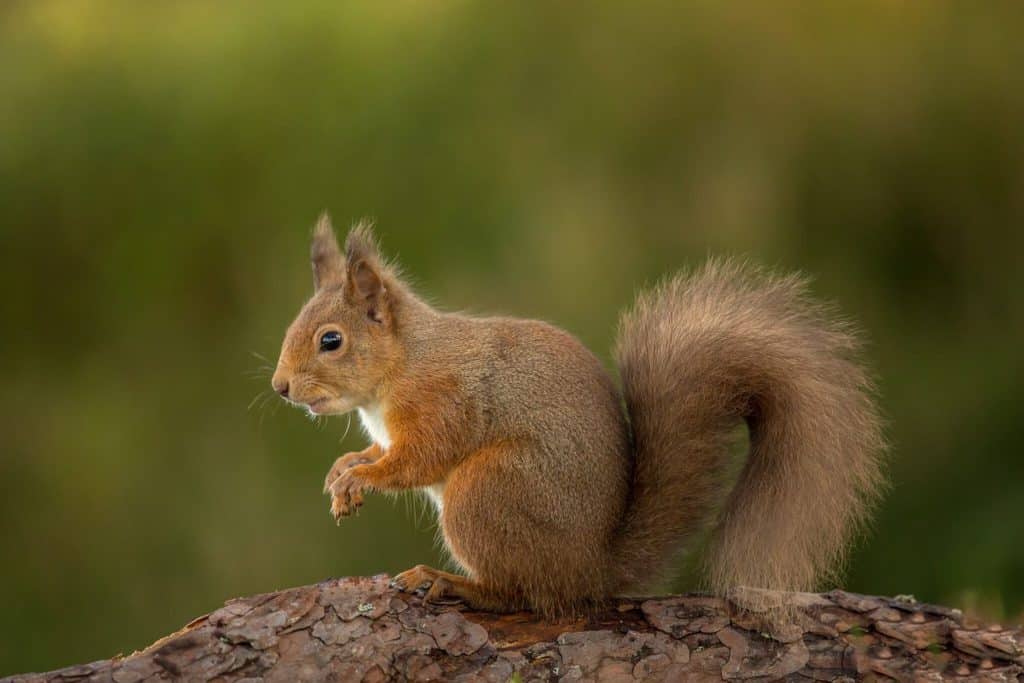Saving Scotland’s Red Squirrels has published the results of this year’s Great Scottish Squirrel Survey, when over 600 people reported 828 sightings in just one week. The results will enhance conservationists’ understanding of squirrel populations across Scotland.
The campaign, which ran from 23 – 29 September, encouraged the Scottish public to spend some time exploring the outdoors while keeping a lookout for both red and grey squirrels. Sightings were reported on the project website.
Dr Mel Tonkin, Saving Scotland’s Red Squirrels Project Manager said: “Sightings records give us a good indication of how red and grey squirrel populations are distributed. Monitoring changes in these populations over time helps us understand the situation and make better conservation decisions.
“We’d like to thank everyone who took the time to get outdoors and take part in the survey”
The results map shows that red squirrels are still widespread across the north of the country, with a large number of sightings reported in Scotland’s Central Lowlands to the north of Edinburgh and Glasgow. In the North East, the only grey squirrel sightings were concentrated in Aberdeen. Targeted control work has significantly reduced this population in recent years, and efforts have been rewarded with increasingly frequent red squirrel sightings in city locations such as Duthie Park and Aberdeen University.
The majority of grey squirrel sightings during the Great Scottish Squirrel Survey came from the Central Belt, especially the two major cities, but were also scattered northwards across Tayside and much of the south of Scotland. However, the National Lottery-funded project appears to be making good progress in its ambition to maintain Loch Lomond and the Trossachs National Park as a ‘red only’ zone, with work in the wider Stirling area also beginning to having a positive impact.
The concentration of red squirrel sightings interspersed with fewer grey squirrel records across Stirling and Tayside supports the project’s assessment that concerted control efforts by project staff, landowners and volunteers is helping to boost red squirrel numbers across the region.
Sightings in the Scottish Borders echo recent findings from the project’s annual spring survey that there are still healthy red squirrel populations in such areas such as Selkirk and Peebles, but grey squirrels are well established, particularly in the east of the region.
In the south west red squirrels are still very widespread, despite grey squirrel presence and recent squirrelpox disease outbreaks in local red squirrel populations along the Solway coast
In total 630 red squirrel and 198 grey squirrels were reported, almost five times as many sightings as is reported in a typical week. The data is particularly valuable because it includes many parts of Scotland that are not directly covered by Saving Scotland’s Red Squirrels’ ongoing population monitoring work.
Dr Tonkin added “More people went out looking for red squirrels in the survey, which isn’t too surprising as our native reds are one of Scottish wildlife’s star attractions. However, we suspect that a good many more grey squirrels could have been reported from central and southern Scotland.
“While they may not be as exciting to see, grey squirrel sightings are very valuable, especially in areas where they are spreading into red squirrel territory. While out looking for any species of squirrel there is also the opportunity to encounter all sorts of other wildlife and we hope people enjoyed their first Great Scottish Squirrel Survey.”
Saving Scotland’s Red Squirrels collects sightings data from the public year-round. Sightings of both red and grey squirrels can be reported at scottishsquirrels.org.uk.






